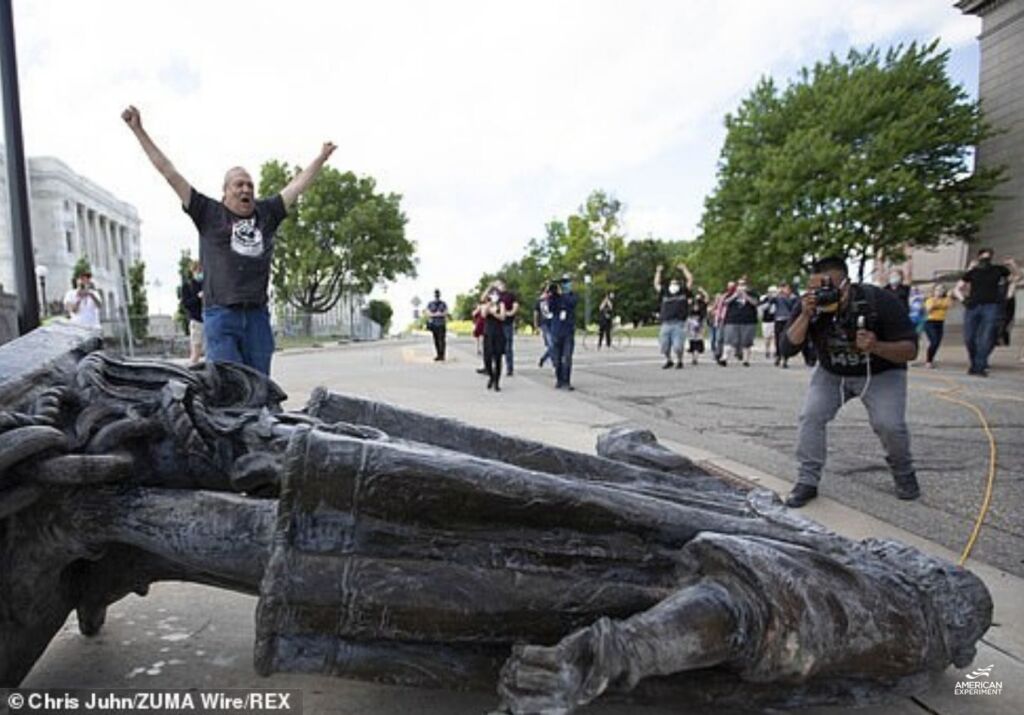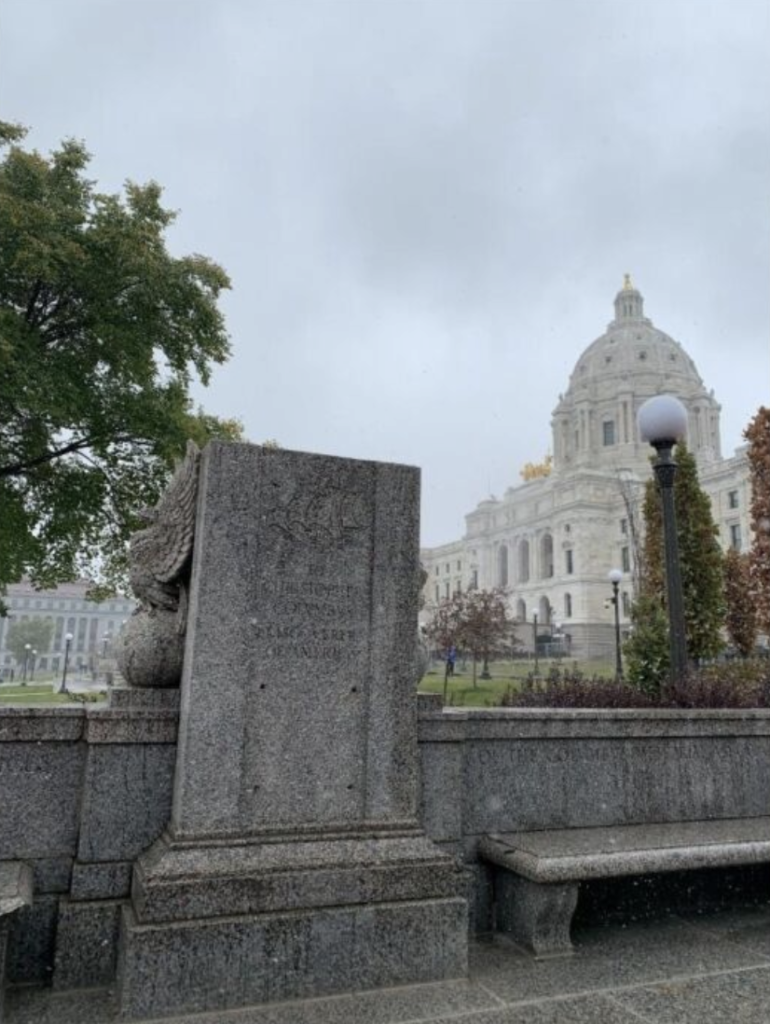Goodbye, Columbus
Police did nothing to stop vandals from tearing down a statue of Christopher Columbus.
A number of statues stand on the ground of the Minnesota Capitol. Since 1931, these have included a statue of Christopher Columbus. The Columbus monument was erected, in part, to honor Italian Americans.
Left-wing activists have criticized the Columbus statue for some time, and in the wake of George Floyd’s death and the mania for destroying monuments that swept the country thereafter, activists decided to dismantle it. Their intention was no secret. Via Facebook, the activists announced their intent to take down the statue at 5:00 p.m. on June 10.

Minnesota’s Department of Public Safety was aware of the planned attack on the Columbus statue, and just after 4:30 p.m., a single state trooper appeared at the monument site. Leaders of the leftist group, arriving at about the same time, explained to the trooper how they planned to destroy the statue. He tried to give them a piece of paper explaining the legal process for removing a statue, which they refused to accept. The trooper then walked away and did nothing to prevent the planned vandalism.
Shortly after 5:00 p.m., the vandals tore down the statue of Columbus. A few minutes later, more than a dozen State Troopers emerged from the Capitol and stood around the now-vacant pedestal. No one was arrested. Obviously, the Governor or others in his administration had decided to allow the criminal destruction of the Columbus statue to go forward without impediment.
Governor Walz released a statement expressing sympathy with the vandals: “As a former social studies teacher, I taught my students that many Minnesotans look at that statue and see a legacy of genocide. Now more than ever, we must take a hard look at the dated symbols and injustices around us.” He encouraged lawful process to remove statues, but to this date, nothing has been done to punish the lawbreakers, even though their identities are known.

Lieutenant Governor Peggy Flanagan was even more supportive of the vandals’ criminal destruction of property: “I can’t say I’m sad the statue of Christopher Columbus is gone. I’m not. … The arrival of Christopher Columbus to what is now the Americas set in motion centuries of violence and genocide against the Indigenous people who already lived here.”
In their article on the George Floyd riots that convulsed the Twin Cities (p. 18), Tom Steward and John Phelan pose the question whether Governor Walz and Mayor Jacob Frey were unable to stem the looting and arson or were unwilling to act effectively because of an ideological affinity with the rioters and arsonists. In the case of the Columbus statue, there is no doubt. State authorities could easily have prevented the criminal destruction of the monument, but they chose not to do so. The Governor and Lieutenant Governor permitted the vandalism, according to their own public statements, because they agreed with the political aims of the criminals.
Minnesota’s Constitution sets forth the powers of the state’s governor. They include: “He is commander-in-chief of the military and naval forces and may call them out to execute the laws, suppress insurrection and repel invasion.” Here, Governor Walz used the State Troopers not to execute the laws, but rather, to facilitate the flouting of Minnesota’s laws.
Walz’s actions were not just out of step with Minnesota’s Constitution and his duties as governor. They also failed to reflect the strong opinions of the large majority of Minnesotans, as we report in the current Thinking Minnesota Poll (p. 30). To be sure, few Minnesotans share the hard left’s enthusiasm for destruction of public property.